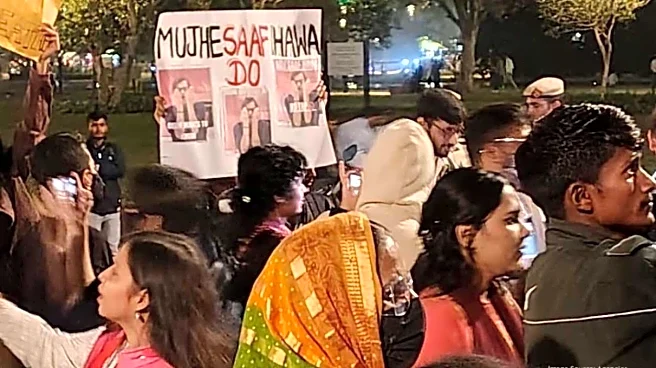The crisis consists precisely in the fact that the old is dying and the new cannot be born; in this interregnum, a great variety of morbid symptoms appear.
— Antonio Gramsci, Prison Notebooks
The first phase
of the Bihar assembly elections is over. The second and final phase will take place on November 11, and the results will be declared on November 14. As the dust settles, Bihar once again stands between memory and fatigue. Its politics has never been about mere elections; it has been about remembering who we were and forgetting just enough to survive who we have become.
Among those who mastered this delicate balance stands Nitish Kumar, the most enduring political figure in Bihar’s modern history.
To call him a Chanakya, as admirers do, is to mistake survival for strategy. To call him a betrayer, as critics insist, is to ignore the cruel arithmetic of Bihar’s politics. The truth lies somewhere in between—the story of a man who learnt to bend so that he could never be broken.
The Inheritance Of A Long Battle
To understand Nitish Kumar’s political grammar, one must travel back nearly a century, to 1933, when three castes—Yadav (Ahir), Kurmi, and Kushwaha—joined hands to form the Triveni Sangh. It was a rare alliance against the entrenched Savarna Samantvad that had defined Bihar’s social order for centuries.
The Sangh’s founders, Yadunandan Prasad Mehta, Jagdev Singh Yadav, and Shivpujan Singh, did not speak the language of capital or governance; they spoke of dignity and representation in a world that refused to see them. For the first time, Bihar’s backward and marginalised communities began to believe they could own politics, not merely serve it.
That inheritance travelled down generations, through the idealism of Karpoori Thakur, through the slogans of Jagdeo Babu, until one day it reached a man named Lalu Prasad Yadav. As Sankarshan Thakur so evocatively documents in Subaltern Sahib: Bihar and the Making of Lalu Yadav, this was more than a political rise; it was the coming of age of a people long denied their share of power. Thakur situates the Lalu moment as a social upheaval rather than a mere electoral shift, a turbulent, chaotic assertion that sought to rewrite who had the right to rule.
It was within the afterglow, and disillusionment, of that assertion that Nitish Kumar emerged.
Lalu’s Moment: The Shout From Below
When Lalu Yadav rose to power in 1990, he didn’t arrive on the strength of manifestos or modern economics. He arrived like a rupture, the laughter of the poor echoing in the Assembly. His government gave voice to the mocked and the invisible. He looked the landlords in the eye and taught his people to do the same.
For all the chaos of his rule, often caricatured by the English-speaking press as jungle raj, Lalu’s Bihar saw a profound psychological shift. The poor began to imagine equality, not just demand it.
But revolutions, like floods, are difficult to contain. Lalu’s politics of liberation turned into the politics of family, and the energy of assertion withered into fatigue.
The Deal Of Survival
That’s when Nitish Kumar, another child of the same soil, began to write a different grammar. He understood something Lalu didn’t: the system forgives the obedient, not the defiant.
When he broke from Lalu and joined hands with the BJP, it was not ideology but instinct. He sensed that Bihar’s power matrix depended not on rebellion but reassurance, to the elite that chaos was over, to Delhi that Bihar would play along, to the media that it could once again talk about ‘development’.
‘Give me power,’ Nitish seemed to promise, ‘and I will give you order.’
The bureaucracy relaxed. Capital returned. The upper castes found their way back into decision-making. Nitish became the perfect bridge, a backward-caste face acceptable to the forward-caste establishment.
But this success came at a cost. In appeasing the system, Nitish gradually undid some of the gains of the Triveni legacy. The fire of protest turned into the mild light of governance. The politics of rights became the politics of arrangements.
The Myth And Method Of Sushasan
For nearly two decades, Nitish Kumar was sold as Sushasan Babu, the face of Bihar’s turnaround. Roads were built, schools reopened, and crime fell briefly, but Bihar remained trapped between old hierarchies and new dependencies.
The national media, hungry for a success story, built Nitish into one. He was the ‘good CM’, the ‘development face of the backward classes’, the ‘Chanakya of coalition politics’. Yet behind this image, the old elites quietly regained their hold.
As veteran JDU leader Navendra Jha, one of Nitish’s oldest associates and a founding member of the Samata Party, observes: “Nitish Kumar may have been called many names, but at heart he remains a socialist, not of slogans, but of systems. He knew that if social justice was to survive, it had to be institutionalised, not merely romanticised.”
The Samata Party, formed in 1994 by George Fernandes and Nitish Kumar after their split from the Janata Dal, was conceived as a corrective to the drift of socialist politics in the 1990s. It sought to retain the moral clarity of the JP Movement while adapting to the demands of modern governance, a middle path between ideology and institution.
Sitting in his home at Abari in Madhubani, Navendra Jha speaks with the calm conviction of one who has seen Bihar’s politics shift from idealism to governance: “We formed the Samata Party with the belief that dignity must walk with discipline. Nitish carried that belief forward. He brought the order of administration to the passion of politics.”
He adds, almost philosophically: “Nitish is not a dreamer in the Lohia mould, nor a populist in the Lalu style. He is a builder. He may not shout slogans of socialism, but he works them into the grammar of governance. He knew that a state cannot breathe in perpetual rebellion.”
And then, with a smile that carries both affection and fatigue: “Nitish understands people, their fears, their limits, their hopes. He has given Bihar not perfection, but predictability. In a state once addicted to upheaval, that itself is a revolution.”
In Jha’s reflections lies a fuller defence of Nitish Kumar: he did not abandon socialism; he adapted it to endure. The dream of vikas became the discipline of vyavastha, and while it may have dulled the romance of revolution, it preserved the dignity of order.
As Jha further notes, “In today’s political landscape, Nitish Kumar stands as perhaps India’s most capable social democrat, a leader who understands society’s pulse, not merely its politics. His governance model blends welfare with restraint, ambition with accountability.”
That balance has been the secret of Nitish’s longevity. His government’s bicycle and scholarship schemes for girls, 50 percent reservation for women in Panchayati Raj institutions, and the liquor prohibition policy, though contested, won him an enduring constituency among women. The improvement of public health systems, the revival of school attendance, and focused welfare schemes for marginalised groups gradually reshaped Bihar’s perception from a state of despair to one of possibility.
His insistence on law and order after the turbulence of the 1990s restored a degree of trust in the state’s machinery. Roads and power connectivity gave rural Bihar a tangible sense of governance, while his welfare initiatives brought new voices, especially women and the poor, into the democratic conversation.
Nitish’s model of Sushasan was never revolutionary, but it was transformative in its patience. He traded spectacle for substance, charisma for consistency. Where others shouted reform, he quietly built systems that worked, at least enough to keep hope alive.
That, perhaps, is Nitish Kumar’s truest legacy: the creation of a culture of governance in a state once defined by chaos.
The New Battlefield: NDA, INDIA & Shadow of 2025
As Bihar heads toward the second phase of polling, the political landscape is once again a chessboard of caution. Nitish Kumar, now aligned with the NDA, remains both its strength and its uncertainty.
The BJP’s leadership, Prime Minister Narendra Modi and Home Minister Amit Shah, is said to be calculating the post-election equations carefully. While the BJP has cultivated its own OBC narrative, it knows Nitish’s face offers a continuity that no other leader in Bihar can replicate.
If Nitish Kumar is not projected as the chief ministerial face, the NDA risks alienating both the Kurmi-Koeri base and moderate voters who still associate him with stability.
As Navendra Jha puts it succinctly: “Bihar values continuity as much as change. Remove the anchor, and the ship drifts.”
Meanwhile, the INDIA bloc, with Rahul Gandhi and Tejashwi Yadav reviving the rhetoric of social justice, faces its own contradictions. The bloc has slogans, but not yet structure; passion, but not yet persuasion.
Adding to this complex tableau is Prashant Kishor, once Nitish’s ally and now his critic, whose Jan Suraaj campaign travels through Bihar’s interiors, seeking to rekindle the moral core of politics. His presence reminds both Nitish and Lalu’s heirs that Bihar’s next movement might come from outside the establishment.
Recent months have also seen Nitish push for greater female representation in local governance, reinforce reservation in state jobs, and support the caste-based survey that has given new shape to Bihar’s social arithmetic. These moves show that even after decades in power, Nitish continues to think like an organiser, not merely a ruler. As Jha says: “He still believes in reform through rules. The caste survey, the focus on education, the women’s quotas, these are not slogans; they are systems of equality.”
Between Dignity And Discipline
Lalu once said, “Politics is not about the chair; it is a struggle to change society”. Nitish never repeated that line. His version might have been: “In politics, the chair is not the goal, but without it, change collapses.”
Between Lalu’s defiance and Nitish’s discipline lies the story of Bihar’s modern politics—the idealist who burned too bright and the pragmatist who kept the lamp alive.
The Last Lesson
As Bihar awaits the results on November 14, the state once again mirrors Gramsci’s interregnum, the old is dying, the new is yet to be born, and Nitish Kumar stands, as ever, in the middle.
He did not transform Bihar, but he taught it endurance. His politics was never about the seizure of power; it was about surviving within it. His was a pedagogy of persistence, not revolution.
If Gramsci believed power is shaped in moments of crisis, Nitish has lived that truth across decades of shifting coalitions. He remains Bihar’s most faithful student of power, a man who understood that in this land, politics is not about who rules next, but who learns best how not to fall.
Ashutosh Kumar Thakur is a columnist. He can be reached at ashutoshbthakur@gmail.com. Views expressed in the above piece are personal and solely those of the writer. They do not necessarily reflect News18’s views.



/images/ppid_a911dc6a-image-176276884879963973.webp)

/images/ppid_a911dc6a-image-176276109908310526.webp)



/images/ppid_a911dc6a-image-176261803562866091.webp)
/images/ppid_a911dc6a-image-176269243509079243.webp)

/images/ppid_59c68470-image-176257768446059412.webp)

